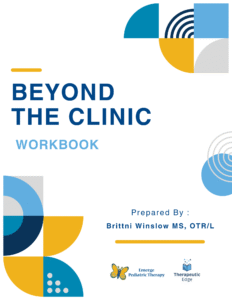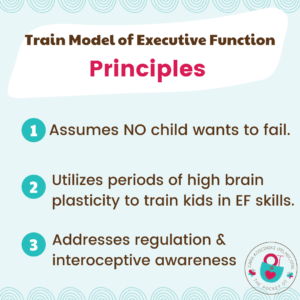
Who are you? What do you tell yourself? What are your beliefs and thoughts as you move throughout your day? We all have that voice inside of us that helps us to work through difficulties we face. Many of the children we work with struggle to realize that they have the power to solve their own problems without asking for help. They may not have an inner voice or don’t know how to develop it. Frustration brings difficult behaviors. But we are in a position help children have the power to problem-solve. We can help students to move from feeling helpless and overwhelmed to, ‘I’m frustrated, what can I do to help myself?’
 Here are some ‘Out of the POCKET’ Tips about Metacognition:
Here are some ‘Out of the POCKET’ Tips about Metacognition:
1) What IS this skill?
Metacognition involves someone’s own thinking. We realize that we have our own thoughts and ‘inner voice’ and then are able to regulate it and use it functionally. As we move through our day, our inner voice allows us to remind ourselves of things we need to do; realize that there is a solution to a problem we face; consider and list possible solutions to a difficult situation; and assist us in making sense of a situation we are in. As children read, they are constantly monitoring their comprehension and when something does not make sense, they may re-read, ask questions, or make a mental note about it. In school, independent thinking and problem solving set a student apart from others. **It’s important to remember that metacognition does not make you smarter, it allows you to use YOUR OWN ABILITIES in order to succeed in various situations.**
How do we use this in daily life? We may realize that there’s a problem and then need to independently find a solution. What are realistic options at the moment? How can we get what is needed to fix it? What have we learned in the past that’s worked? Metacognition is quite complex as it involves knowledge about what’s worked in the past and what might work again and/or how can we adapt for future success. It involves examining and re-examining during a task. Metacognition is part of Executive Function and this continues to develop until we are in our mid-20s. According to Edutopia: Researchers at the University College London have discovered that subjects with better metacognition had more gray matter in the anterior (front) pre-frontal cortex.
Need more information about other Executive Function topics? Read about working memory in our earlier blog post.
2) Teach Students to Self-Talk.
As teachers and therapists, we can help our students to develop their inner voices. First, help them to realize they HAVE an inner voice! Begin by asking them to talk through a task. Demonstrate it for them since they may not realize their potential. When working with a student, express some of the things your inner voice tells you as you work through the task. Explain that you make a choice, and then a plan about how to work through the task. Use visual cues and match them with words.
Teach parents to follow through with simple tasks with which children are already successful and independent. This builds confidence and the realization that the voice is already there! Talk through brushing teeth or playing a game, for example.
3) Talk Through Problems BEFORE They Occur
I realize this takes some planning and one on one teaching. This is always best in the natural setting, so plan to monitor your child closely during a difficult task. Anticipate her movements and note when she commonly becomes frustrated. Catch her BEFORE she enters a meltdown or upset state. I speak about this in ALL of my conferences — NEVER try to teach a child during a meltdown, the goal should be safety when a child is in fight, flight, or freeze mode.
When a child begins to show signs of frustration, ask her to make a list or state some possible solutions and then discuss why each one would or would not work. Encourage her to do this on multiple tasks in over a variety of settings for best generalization.
BONUS TIP!! Use the new Train Model of Executive Function and Regulation.
Check out our Executive Function Course!This model is new and provides a visual representation for every skill involved in EF. The best part is, the model talks about the importance of regulation and interoception.

4) Use Working Memory During Functional Tasks
Working memory involves remembering a few pieces of information in the short term and for a specific task. One of my favorite childhood video clips perfectly illustrates this. In the Train Model, working memory is the TICKET to board the train! It contains information needed for THAT journey that’s quickly forgotten afterward. View the Sesame Street clip HERE. Ask kids to remember a few pieces of information as they begin an obstacle course and instruct them to stop and repeat the information randomly. Like all skills, this takes practice and needs to be rehearsed often in order to be generalized into daily use.
5) Use Brainstorming Strategies
Brainstorming ideas help to increase creative thinking and is great because there are really no right or wrong ideas. Brainstorming encourages children to come up with creative strategies and to see them visually on paper. There are many ways to brainstorm, but my favorite way is to write ideas onto index cards and put them into piles either in order of which to try first, things that might/might not work, etc. Pair children with those who are strongly creative to help with peer interaction.
Here’s a site with free printable graphic organizers.
Do you have any ideas to help children with metacognition? I’d love to hear them!



